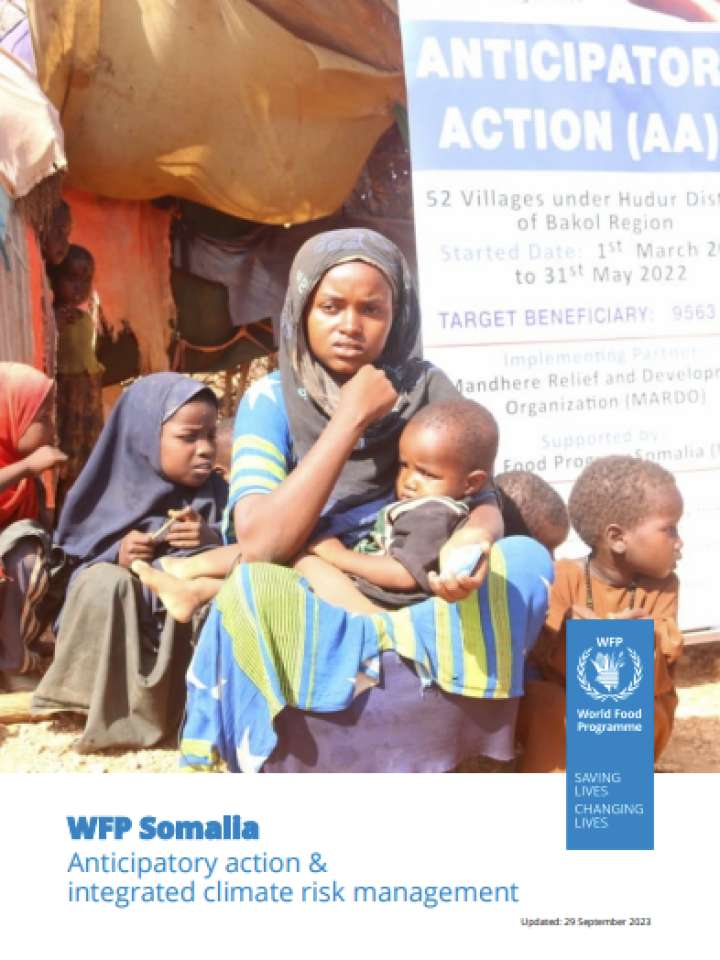WFP Somalia – Anticipatory action and integrated climate risk
Somalia’s prolonged humanitarian crisis is marked by recurrent climate shocks like droughts and floods. Extreme weather events destroy crops and kill livestock, disrupting livelihoods. This worsens hunger and drives internal displacement, as people abandon failed farmlands and pastures – as in the 2020-2023 drought, which caused over 1.6 million displacements by early 2023. Flash floods in April 2023 drove further displacement, with El Niño expected to cause more flooding by year’s end. Integrated risk management tools like anticipatory action and risk insurance are powerful in protecting vulnerable populations from the impact of climate shocks. They work by linking pre-committed funding to resilience building plans prior to forecasted shocks, a more cost-effective approach than responding to crisis; one study on Somalia conducted by the USA. WFP implements Integrated risk management tools like anticipatory action to mitigate the impact of future climate shocks.
This publication finds that adequate risk management will require:
- Anticipatory actions for disaster mitigation (risk reduction) at the community and government level.
- Sustainable natural resource management (risk reduction) at community level, integrated into WFP programmes such as food systems strengthening and food assistance for assets intervention through creating and rehabilitating natural assets and improving agricultural practices.
- Risk insurance (risk transfer), enabling payouts to vulnerable and resource-constrained governments and communities.
- Productive safety nets and financial inclusion (risk reserves and prudent risk taking) through formal and informal structures for communities to generate income, enhance financial literacy and inclusion, and increase household capacity to save, invest and diversify livelihoods.
- Government capacity building WFP is working with national and sub-national government entities to strengthen their capacity to set up and effectively use anticipatory mechanisms for multi-hazard disaster mitigation, including via forecast-based financing and insurance, and is advocating for a multi-hazard anticipatory action framework
Explore further
